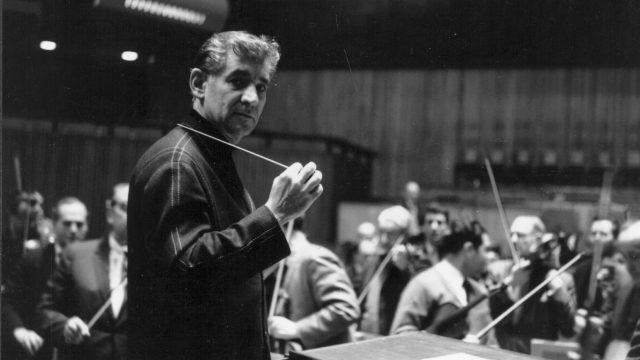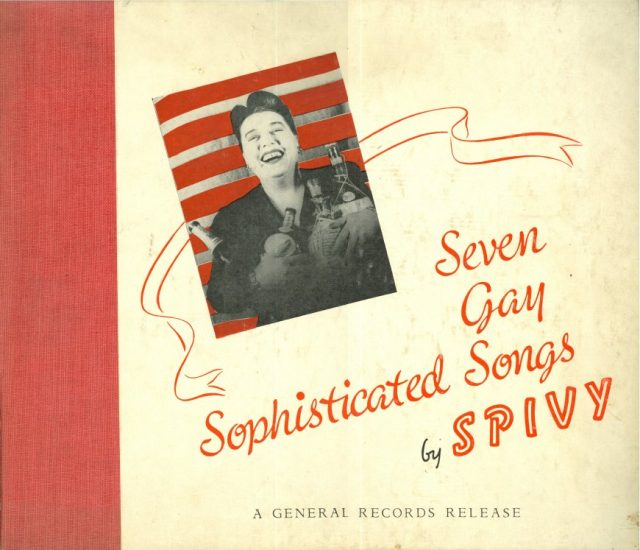Allegro
Pride Month, Music, and the LGBTQ Community
Volume 123, No. 6June, 2023
At even a precursory glance, the role of gays, lesbians, bisexuals, and trans people as leading voices within the arts is immediately evident. Yet this relevance alone has not been enough, particularly in years past, to combat the ignorant fear if not the visceral hatred of far too many toward the LGBTQ community. Personal lives had to remain tightly closeted to avoid government and police persecution, as well as ostracization from producers, arts administrators and, in many cases, fellow artists. The practice of having “marriages of convenience” (really, of necessity) and worse, the denial of one’s lifestyle and actual life partner, amounted to a further ghettoization of some of the greatest creative minds. Pride came only with the boldest activism of the Stonewall Inn uprising of June 28, 1969, and surely during the cruel years of the AIDS crisis.
Cut to the present and LGBTQ+ visibility has increased globally with the work of “out” creatives and “out” characters featured in film, literature, visual art, stage works and on television screens. Perhaps it’s unfathomable here from my office on West 48th Street, but the current hysterical backlash to progressive gains is boiling over not only in rural enclaves but the state houses of Florida, North Dakota, Tennessee, Texas and other primarily conservative regions.
As of May 23, the Human Rights Campaign’s Year-to-Date Snapshot of Anti-LGBTQ+ State Legislative Activity told the awful truth: so far, over 520 anti-LGBTQ+ bills have been introduced in state legislatures, a record; over 220 bills specifically target transgender and non-binary people, also a record; and a record 70 anti-LGBTQ laws have been enacted so far this year, including: 15 laws banning gender affirming care for transgender youth, 7 laws requiring or allowing misgendering of transgender students, 2 laws targeting drag performances, 3 laws creating a license to discriminate, 4 laws censoring school curriculum, including books.
For musicians identifying as LGBTQ, the struggle has often been dire, particularly in genres deemed particularly macho, i.e. jazz and rock. Gary Burton has been acknowledged as one of the most important vibraphonists in the history of the instrument, and his music crosses boundaries between many genres. The endless accolades, however, didn’t allow him to feel safe as a gay man, at least not until the publication of his 2014 autobiography, “Learning to Listen”, which details his experiences in music and life. When asked why he’d chosen to come out at this later stage of his life, he answered inasmuch that it was due time. Burton’s fearlessness allowed others to come forward, happily, but it’s just as important to look back, particularly into the lives and careers of two Local 802 musicians who survived through times more arcane.

Leonard Bernstein conducting at London’s Royal Festival Hall in 1963.
LEONARD BERNSTEIN (1918-1990) is perhaps the most celebrated conductor-composer in the canon of American music. Born in Lawrence, Massachusetts (itself the site of a vastly important mill strike by the Industrial Workers of the World in 1912), Bernstein studied piano as a child and quickly took to orchestral music. At the age of 14, he attended a concert of Arthur Fiedler’s Boston Pops which made a profound impact on his life; among the material was Ravel’s “Bolero”. In 1935 he became a student at Harvard, studying with Edward Burlingame Hill and Walter Piston, serving as accompanist to the Harvard Glee Club, performing numerous contemporary pieces and staging a production of gay composer Marc Blitzstein’s “Cradle Will Rock”, among other credits.
His professional baptism by fire was with the renowned New York Philharmonic, taking over the baton for an ailing Artur Rodzinski with scant notice, and drawing international praise. Bernstein’s credits number far too many to list here, but what has been less publicly acknowledged is his life as a gay man.
Though Bernstein married Chilean actress Felicia Cohn Montealegre in 1958 and the couple remained together, successfully raising a family, he continued to see men. She wrote to him: “You are a homosexual and may never change — you don’t admit to the possibility of a double life, but if your peace of mind, your health, your whole nervous system depends on a certain sexual pattern, what can you do?” (from “The Letters of Leonard Bernstein” edited by Nigel Simeone).
They separated in 1975 when Bernstein lived with a boyfriend, but he returned to Felicia when she became terminally ill, only parting after her death some three years later.
As has been quoted often, his West Side Story collaborator Arthur Laurents, stated that Bernstein was “a gay man who got married. He wasn’t conflicted about it at all. He was just gay.” And according to “The New Yorker”, prolifically so. While this was rarely a secret, Bernstein’s passionate, intimate relationship with a young Tokyo man, Kunihiko Hashimoto, has only come to light in recent years. Hashimoto became an important collaborator as well as lover, and the relationship continued across oceans and through the remainder of Maestro’s life.
 BERTHA “MADAME SPIVY LEVOE” LEVINE (1906 — 1971) was a celebrated pianist-vocalist, actor and early activist for the LGBTQ community. Born in Brooklyn, as a young woman she began performances in area speakeasies which, by the mid-1930s, led to engagements in major New York nightclubs where she was lauded “the female Noel Coward” due to her satirical, double-entendre-filled lyrics. “The New York Times”, in 1939 wrote: “Spivy’s material, witty, acid, and tragicomic, is better than most of the essays one hears about town, and her delivery is that of a sophisticated artist on her own grounds. She knows the value of surprise in punching a line, she uses understatement unerringly, and her piano accompaniment is superb.”
BERTHA “MADAME SPIVY LEVOE” LEVINE (1906 — 1971) was a celebrated pianist-vocalist, actor and early activist for the LGBTQ community. Born in Brooklyn, as a young woman she began performances in area speakeasies which, by the mid-1930s, led to engagements in major New York nightclubs where she was lauded “the female Noel Coward” due to her satirical, double-entendre-filled lyrics. “The New York Times”, in 1939 wrote: “Spivy’s material, witty, acid, and tragicomic, is better than most of the essays one hears about town, and her delivery is that of a sophisticated artist on her own grounds. She knows the value of surprise in punching a line, she uses understatement unerringly, and her piano accompaniment is superb.”
A special target were the right-wing politicians and especially the Daughters of the American Revolution, who were lampooned in the barely veiled “100 percent American Girls”: “Our country is so fine, it will really be divine, when we get everyone but us to move away.”
In 1940 Levoe opened her own nightclub, Spivy’s Roof, on the penthouse of 139 East 57th Street, which became a highly successful gay and lesbian center of midtown nightlife. Due to the homophobia of the day, the establishment was private and without signage yet attracted major film and Broadway stars in the know, particularly those living closeted lives. A pair of grand pianos across from the bar assured that Spivy could join in with the house pianist, usually Liberace, to the thrill of the crowds. Regulars included Mabel Mercer, Thelma Carpenter, and Martha Raye. “It was the place in those days,” Davis said, “especially for men,” who adored her. Women did too, including her current lover, usually seated at the bar, and friends such as Tallulah Bankhead and Patsy Kelly, whom she entertained at specially reserved tables. Paul Lynde, on the Tonight Show, added: “Judy Garland and Martha Raye and Judy Holliday… they used to come in and Spivy would entertain all night long for them….”.
The writer Ignacio Schwartz reminisced: “She was a plump lady (one writer said that she was “squat like a bulldog.”) She wore her hair in a tight pompadour with a white streak down the middle. She would place a tall glass of what was probably chilled gin on the piano before her. During her time on stage, she would drain a couple, but her singing — her low, throaty voice — would always be perfect.” https://sfbaytimes.com/spivy-last-fleur-de-levys/
A recent blog post on Madame Spivy described her favorite means of introducing a song while capturing attention: “This is VERY sad and we must be VERY quiet, please.” She would then launch into a number that was anything but either of those things.” https://brianferrarinyc.com/2020/02/22/madame-spivy-aunties-face/
So popular had she become, that the entertainer was signed to Commodore Records for a series of 78 RPM sides compiled as “Seven Gay Sophisticated Songs”, which were followed by several albums for other labels. Spivy’s songs, both original and those of other composers, were utterly timely and bravely satirical.
Following her club’s 1951 closure, Spivy focused on acting and was soon cast in several film roles and one noted episode of the “Alfred Hitchcock Presents” television program (many will recall “Specialty of the House”). Among her film work was the 1960 adaptation of James T. Farrell’s “Studs Lonigan” and Rod Serling’s powerful “Requiem for a Heavyweight” of 1962.
In closing this Pride article, here is the full lyric of “100 percent American Girls”:
Members of the Daughters, Aunts, Mothers and Second Cousins of the War of 1812, form into double file.
Stop twitching at that bunting Carrie and smile.
Take off that feather boa, Mary Louise this is a parade, not a charade.
Vera, you go right back to Washington, you’re not supposed to be marching at all! You’re supposed to be keeping THOSE people out of Constitution Hall.
Please… you on the float there. Lord Calvin is sagging. Yankee Doodle is flat. Your powder is wet. And your Mayflower is dragging.
Oh thank God here’s George III. Alright Lizzie, stand right there and sneer.
Please Consuela, someone has to be the rabble. You throw the Boston tea right in this little box over here.
Remember the things we said we’d never abandon. Remember we’re still true to Alfred M. Landon.
Remember when the Bill of Rights…. HMMMM ….. tried to get fresh with me!
My Westbook Pegler ‘tis of thee. Ah ha! The bugle! Formation girls:
Nelly pull your belly in — it’s for the U.S.A. We’ve got to be adorable today.
Oh aren’t you excited? And isn’t this a binge? Lets unfurl every curl in our lunatic fringe.
Tilly, Queenie, Magnolia, Hillaire… to arms!
Nelly pull your belly in and hold your chin up high. We’ll give the crowd a treat as we pass by.
The Pricker unit forward, the Bilbo club behind….And Bessie you keep waving what your grandpa signed.
All together now: Comb your hair for California, wash your neck for Io-way.
Our country is so fine, it will really be divine when we get everyone but us to move away.
Take a Benzedrine for old Virginia, where our daddies sniffed their snuff with dukes and earls.
We are for the human race, which is lovely (in its place). We’re 100 percent American Girls!
What? Do I see one of you lag when before you is marching the flag?
Did Washington crossing the Delaware say “Let’s call it off, boys — I’m not in the mood for rowing”?
Did Betsy Ross say “Fold up the banner girls — I hate sewing”?
Hmmm. Really girls! Eyes up! Curls up and away!
Annie pull your fanny in — it’s for the U.S.A. We’ve got to be adorable today.
When Valley Forge was icy and up to here in snow… did Dolly Madison say “No”?
Myrtle, Cissy, Prissy, Mamie — to arms!
Annie pull your fanny in — it’s for the U.S.A. We’re 100 percent American Girls!
–composed by Charlotte Kent for the album “An Evening With Spivy” (Gala Records 1947)
John Pietaro is Local 802’s director of organizing as well as a published poet and journalist. You can reach him at jpietaro@local802afm.org or (212) 245-4802, ext. 230
